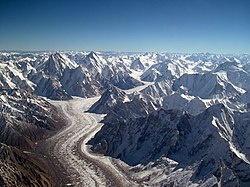Let me preface this with a statement that I'm not building a computer, and so won't have handy pictures of how pieces fit together. But! I am here to tell you that if you know how to snap a couple lego block together, you too can build your perfect pc. For cheaper than a pre-assembled gig.
Why would you? Well, besides getting a more powerful computer for cheaper, and then the option to upgrade it incrementally, you also get the satisfaction of knowing you built one of your most powerful tools with your bare hands! Ok, maybe wear gloves.
First, if you're really lost on all this but do want to give it a shot, here is a great resource:
http://www.logicalincrements.com/
Lets get started. The main things thing you'll need is..
A Processor

The processor (aka CPU) is the brain of your computer. It's responsible for executing any programs/calculations your computer calls for.
How do you pick one? Well, most modern CPUs are more than powerful enough for basic use, and even gaming. The CPU doesn't tend to be a bottleneck for most people. So, if that sounds like you, get a nice mid-range CPU and call it a day. If you're going to do a lot of video editing, simulation running, or you just really like talking about how many Gigahertz you have, get a beefier CPU.
Just know if you get a real beefy CPU and put it through the ringer, you definitely want a nice heat sink so that your house doesn't burn down.
Just remember, there are two main types (AMD and Intel), and within thoe two types are different "socket types" of CPU. For example, AMD uses AM1, AM2, AM3, AM3+, etc. You'll want to note what type yours is so you can pick the right..
Motherboard

The "heart" or connective tissue of your computer. A motherboard is what you snap all of the other pieces into, to have them communicate with one another. Typically, a motherboard will have a lot of stuff built in so you don't have to worry about it. For example, sound cards. ethernet controllers and USB are all standard motherboard features.
Additionally, if you're not much of a gamer, you can find motherboards out there that have built in graphics cards. That'll eliminate a major cost and simplify your build.
Also, note that motherboards come in different sizes. This'll determine what size desktop case you can fit it in. So if you want to build a tiny shoebox computer, make sure you get a motherboard that'll fit into a microATX case, or similar.
Have a motherboard picked out? Great. take a look at its specs and find out what kind of memory you need.
RAM

Random access memory is high-speed storage that your computer needs to respond quickly to things you ask it to do. It's basically the same as your hard drive, but much faster. When you open a program that knows it's going to be running for a while, it'll request RAM space to store it's frequently-accessed features in.
RAM tends to be cheap and adds a good bit of performance, so my reccomendation is get the best memory sticks your motherboard can handle. Look for cache speed and capacity.
All good? Great, now we need..
A Power Supply

You need this to plug into the wall so you can power all those things in your PC. Don't pick this based on wattage, unless you're building a server farm or something. Instead, do some research and find a brand your comfortable with. I like Corsair. Look in to efficiency.
If your power supply fails, the rest of your computer can become a nice paperweight, so pay attention here.
The Rest
Now, theoretically, if you've got all these components (and the motherboard has a built in graphics card) you could snap together everything and power it on. You won't get much besides a BIOs screen, but hey, its a first step!
I'll talk more about what you need to finish up with a sweet PC next time 'round.














